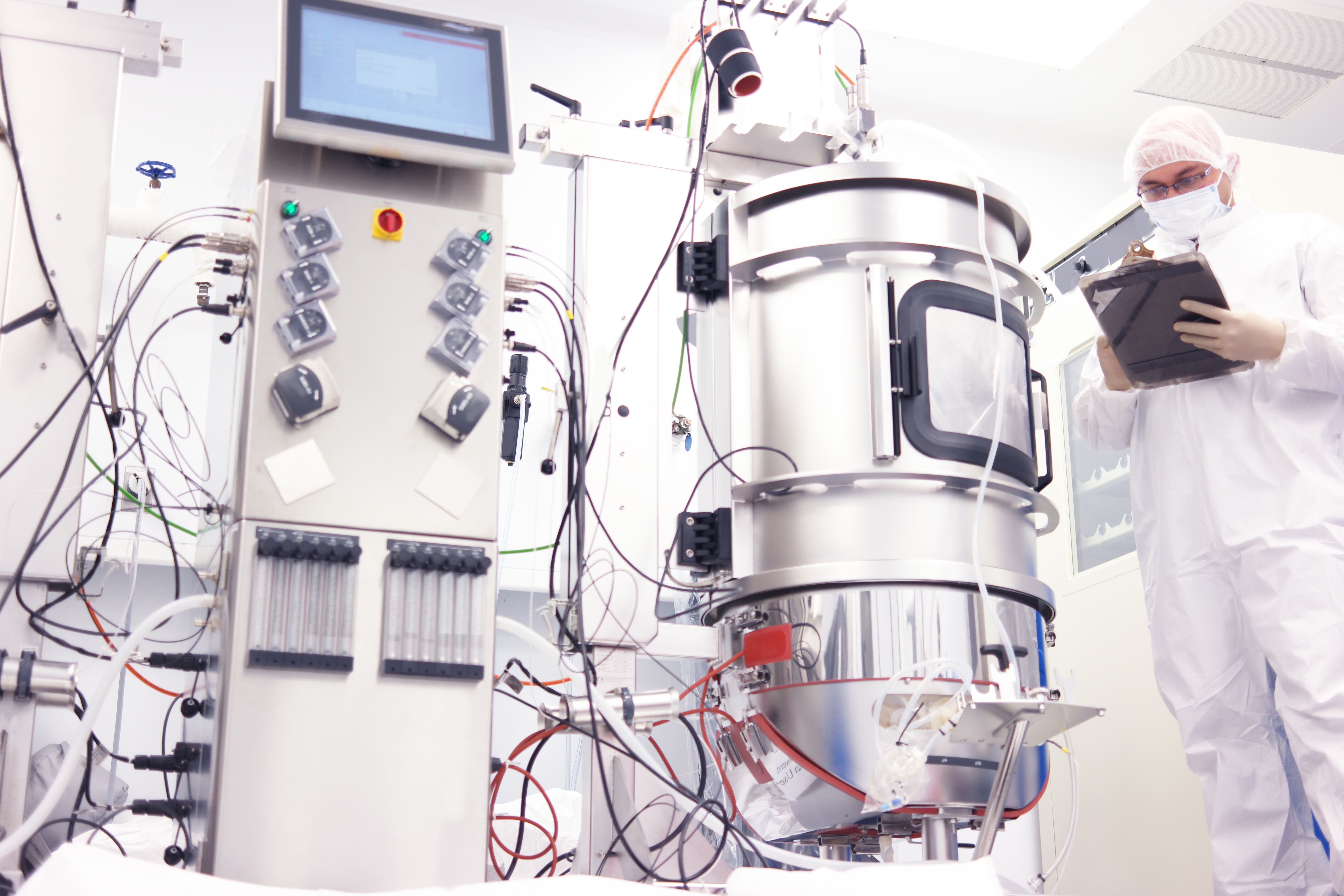
The biotechnologies associated with new drugs and gene-based therapies have become increasingly complex, requiring correspondingly complex manufacturing processes. Biopharmaceuticals, also known as biologics, are drugs that are derived from biological sources such as organs, tissues, mammalian cell lines, or genetically modified cells & organisms. Researching and producing these cutting-edge biologics requires the newest generation of bioreactors capable of providing a stable, precisely controlled growth environment for highly sensitive botanical and mammalian cell cultures. To create those environments, bioreactors require accurate, stable control of dissolved oxygen (DO) and pH to maintain critical process parameters, combined with maximum uptime to reach target yields.
Application Requirements
Maintaining a controlled environment within the bioreactor is an essential step toward achieving optimal cell growth. Two critical factors that govern cell culture yield are:
- The levels of dissolved oxygen (DO) in the bioreactor and
- pH of the fermentation broth
The cells within the bioreactor survive only if certain process parameters, such as DO and pH, stay within specified operating conditions. To maintain these optimal process conditions, bioreactors rely on mass flow controllers (MFCs) to deliver accurate and stable flow of critical gases that stabilize key functions within the bioreactor.
Tight control of DO is achieved by enriching the airflow with oxygen, or by depleting it with nitrogen. Maintaining the proper levels of DO in turn regulates cell growth and reduces the production of toxic cell by-products. Together, these conditions increase reactor yields – enriching air flow with oxygen or depleting it with nitrogen better regulates overall cell growth rates.
Additionally, tight control of pH with carbon dioxide flow is also critical for creating the proper growth environment within the bioreactor. Some bioreactor processes introduce acids and bases to achieve the desired pH level, but this approach is often too harsh for the delicate mammalian cells involved in bioprocessing. Using carbon dioxide to tightly control pH levels has been found to be a more effective approach to maintain a stable fermentation broth for those delicate cell cultures.
Process Solution
Gas flow controllers are a key component to overall bioreactor performance and uptime, controlling the delivery of critical gasses that maintain the proper levels of both DO and the pH of the fermentation broth. Since a typical bioreactor process run can last up to 15 days, it’s vital that the gas flow controllers deliver accurate, repeatable, stable gas control performance. In addition, if gas flow rates change, the SLA5800 pressure controller is able to maintain stable pressure keeping the process running smoothly and efficiently.
Brooks Instrument SLA Series mass flow controllers have been delivering efficient, long-lasting process control in bioprocessing for decades. Engineered to deliver superior long-term drift stability and the best mean-time-between-failures (MTBF) in the industry, SLA5800 & SLAMf mass flow controllers have earned a reputation of being an industry standard in life sciences applications.

Building upon a deep understanding of gas flow control in bioprocessing, Brooks Instrument engineers addressed key industry challenges by developing features that enhance the proven SLA Series MFCs with additional benefits for equipment manufacturers and end-users. Special biotech option packages – Performance and Premium - are available on both the SLA5800 Series Biotech MFC and the hose-down/wash-down suitable SLAMf Series Biotech thermal mass flow controllers platforms.
Key features available with SLA Series Biotech MFC models include:
- A high turndown ratio to control a wider range of gas flows: The devices have a turndown ratio of 250-to-1 on flow rates of 5 sccm to 150 slpm and 150-to-1 for higher rates. The higher ratio allows the SLA Series Biotech MFCs to accommodate a wider range of gas flows, thereby eliminating the need for separate low-flow and high-flow devices to cover the requirements of a typical biotech application.
- An extremely low leak rate valve: The SLA Series Biotech MFCs also have an enhanced control valve with a leak rate of 0.005 sccm for flow rates between 5 sccm and 150 slpm, and a rate of 15.6 sccm for higher flow rates. The low leak rate potentially eliminates the need for a separate shut-off valve in the gas delivery system, reducing component purchasing costs and saving engineering, testing and validation time.
- Pre-calibrated multi-gas pages: The Brooks Biotech Series MFCs can control up to four different gas flows, including air, carbon dioxide, nitrogen and oxygen. The MFC user can select any of these gasses using Brooks BEST software or through digital communications. This combination of high turndown ratio and multi-gas, multirange functionality allows system designers to reduce the number of MFC configurations by up to 90 percent.
- The premium versions of both platforms also include additional support for emerging regulatory requirements for materials used in bioprocessing systems. They have USP, FDA and ADI-free O-rings and valve seats and a 2.1 certification for materials of construction (wetted path), plus NIST/ICC gas-specific calibration certification for traceability.
In addition, all SLA Series Biotech MFC packages are available with an interface for the high-speed EtherNet/IP™ and PROFINET digital communications protocol, which enables exclusive real-time MFC diagnostics and provides a pathway for predictive modelling and analytics.
Component datasource missing. Select a datasource for this component.